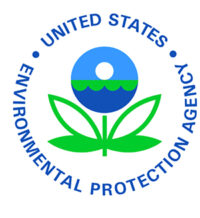WASHINGTON – July 11, the U.S. Environmental Protection Agency issued updated recommendations under the Clean Water Act for contaminants that states, Tribes, and territories should consider monitoring in locally caught, freshwater fish. For the first time, EPA has added several per- and polyfluorinated substances (PFAS) to the contaminant list alongside lead, three cyanotoxins, a flame retardant, and amphetamine. The recommendation to monitor for twelve PFAS fulfills a key commitment in Administrator Regan’s PFAS Strategic Roadmap and helps protect communities from exposure to these “forever chemicals.”
“It’s important for EPA to continue advancing the science on PFAS as part of our comprehensive effort to protect the public from these harmful substances,” said EPA Acting Assistant Administrator for Water Bruno Pigott. “By considering the latest science in their local advisories and testing for PFAS in fish at a local level, states and Tribes can protect subsistence, recreational, and sport fishers.”
States, Tribes, and territories monitor and analyze contaminants in fish and shellfish caught in local, fresh waterbodies. When they find contaminants at concentrations that can negatively impact people’s health, they issue consumption advisories. Some state and territorial programs that issue fish and shellfish advisories rely on EPA’s recommendations to determine which contaminants to monitor.
Many states are already monitoring for certain PFAS in fish and using local data to issue fish consumption advisories where appropriate. Examples of states that have advisories in place include Alabama, Connecticut, Indiana, Maine, Maryland, Massachusetts, Michigan, Minnesota, New Hampshire, New Jersey, New York, North Carolina, Oregon, Pennsylvania, Washington, and Wisconsin.
With this announcement, EPA is suggesting that states, Tribes, and territories monitor for twelve PFAS and other contaminants including lead, cyanotoxins, a flame retardant, and amphetamine. This update comes after reviewing scientific literature, analyzing data, and seeking external peer review of the agency’s analysis, and it will help ensure that state and Tribal fish advisories consider the latest science.
EPA’s most recent National Aquatic Resource Survey, which monitors fish tissue from lakes and streams across the country, and numerous other studies have found PFAS in freshwater fish and shellfish at levels that may impact human health. These studies indicate the presence of PFAS in fish, but they do not give enough information at a local level to inform public health decisions, which is why the role of states, Tribes, and territories in gathering local data is essential.
EPA recommends that people who eat locally-caught, freshwater fish and shellfish caught in local rivers and lakes consult their state, Tribe, or territory to determine the safe amount of those fish and shellfish to eat.





